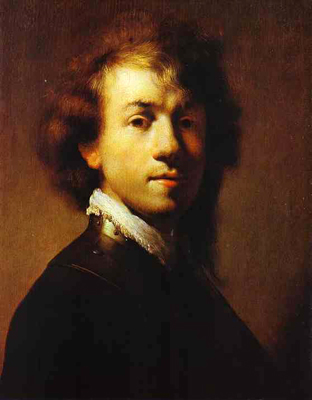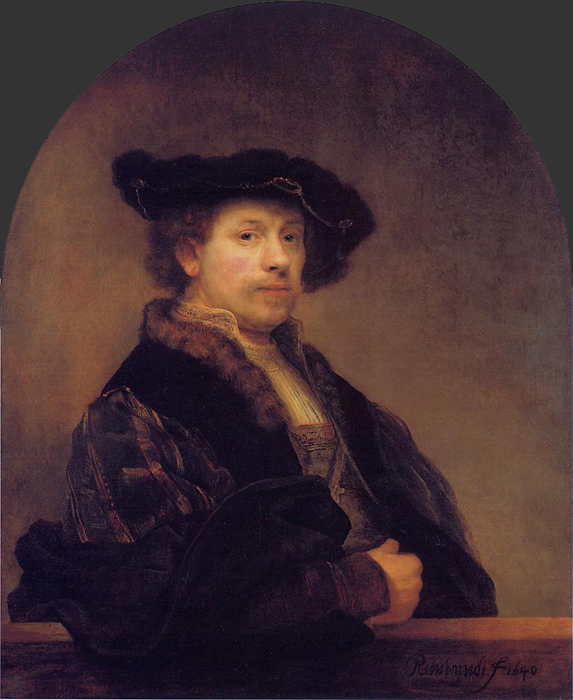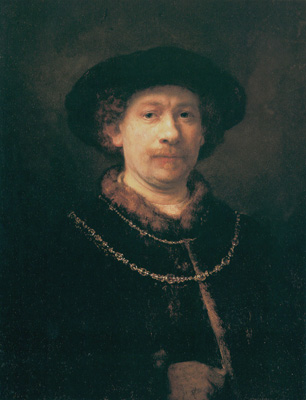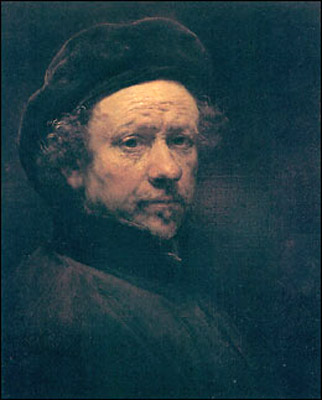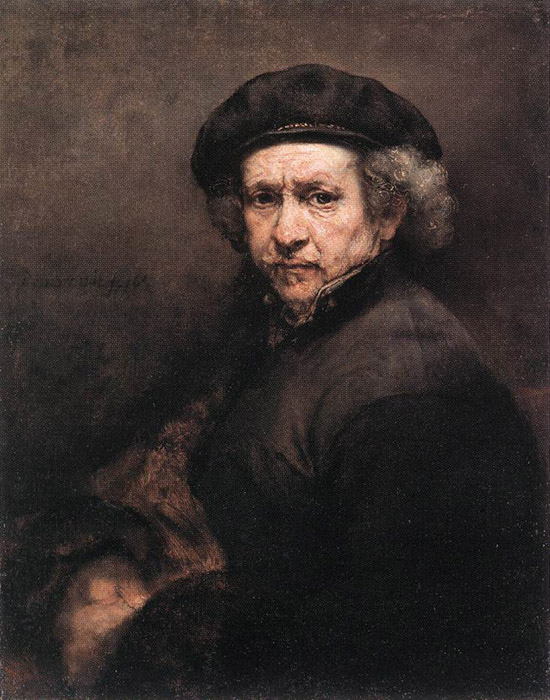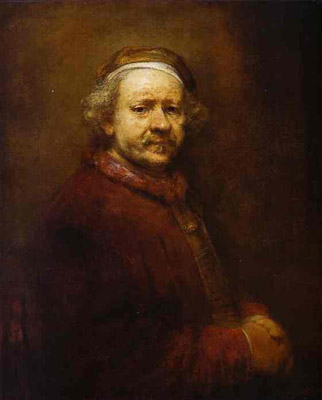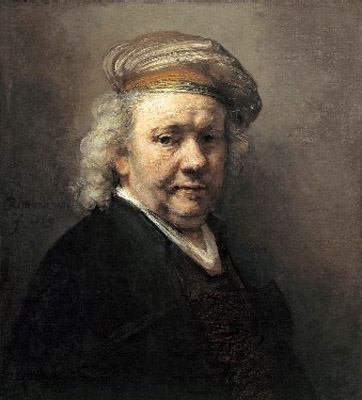AREAS OF KNOWLEDGE:
THE ARTS
REMBRANDT SELF PORTRAITS
In Duchamp's Fountain and Cage's 4'33'' and The value of art we will encounter central and marginal cases of artworks that stretch the boundaries and thwart attempts at a singular definition of art. We will not shy away from the extremely slippery problem of differentiating good art from bad.
The intention of this unit--by referring to a recognized central case of greatness in traditional art--is to provide students with a default base line for meta-thinking about the nature of art. Eight Rembrandt self portraits are presented here, spanning Remdrandt's 40+ year career as a master of representational oil painting.
CLASS ACTIVITY
Invite the class to the front of the room, standing close to the screen. Project the images. Tell them to work in trios on the following task for a timed 5 minutes:
Limiting yourself to the evidence of the Rembrandt self portraits for now, craft preliminary bullet points for a definition of art.
When the time is up, ask a scribe from each trio to record their bullet points on the white board. Next ask a student to erase repeats and rapidly facilitate consolidating what remains to a single set of preliminary bullet points.
Move on rapidly to Duchamp's Fountain and Cage's 4'33''. It will have all the more impact after having a close encounter with Rembrandt.
THE REMBRANDT SELF PORTRAITS
Rembrandt Harmenszoon van Rijn (1606-1669) painted more than fifty self portraits. They were the most complete and accurate record of the physical appearance of any human being prior to the invention of photography.
No sitter was more readily available than Rembrandt himself, seen through his own looking glass. The self portraits were certainly convenient, default subject matter, but they also had a commercial function. Rembrandt always kept several self portraits in stock. They were shown to prospective customers in order to reassure them of the artist's painterly skills, and to act as exemplars for portrait and genre painting commissions.
Especially in the final self portraits, there is no mask of flattery. Rembrandt bares his soul in a series of canvases unprecedented in their intensity and candor.

